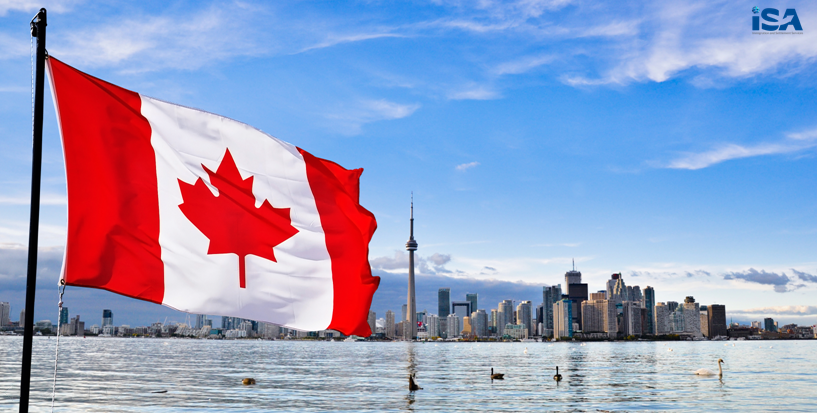Canada’s PNP programs see an escalation

As Canada is frequently portrayed as a nation of provinces, this escalation vouches for the significance and intensity of its constituent parts and is seen as a strong country.
Canada’s Constitution Act allows every province of Canada the capacity to make laws on migration to that territory.
For over a century this specific provincial authority lay at a low pace, with the national government ruling the setting up of migration policies. Even today, most migrants to Canada who land under exclusively government projects engage in fulfilling administrative prerequisites.
But the past ongoing decades have seen each one of Canada’s ten provinces and two of its three regions consent to arrangements with the central government. The main territory to close such an understanding was Quebec, which is larger part French- and has a history with declaring itself as self-sufficient, which it did with a specified Agreement during 1971.
The 1991 Canada-Quebec Accord gave Quebec the privilege to choose all its monetary migrants utilizing some set of criteria, subject to fulfilling certain government guidelines. It likewise gave Quebec the compensation for incorporating such settlers.
The thought is for every territory to utilize a specific number of allotted spots and create projects tweaked to the individual province’s identity, desires, and needs. Consequently, a region may identify a particular profession or aptitude where it has needs, energize population development or interest in a specific territory of the region, and hold people who have studied or worked in the area.
While the Provincial Nominee Programs encourage a minority of settlers to Canada, the numbers are as yet noteworthy: the 2019 target is for 61,000 permanent inhabitants to land in Canada through PNPs; this number is an eminent increase over the earlier year’s number of 55,000.
Of the areas and domains barring Quebec, Ontario’s program is the biggest, with a large number of permanent inhabitants. In any case, a few smaller territories have utilized their PNPs.
Manitoba was the primary area to initiate a PNP, which it did in 1998. From that point forward, in excess of 130,000 financial settlers have landed in the region, and more than 90 percent have remained. The chances to move under PNPs are quite impressive.
Easy Steps to the PNP
In case you’re thinking about coming to Canada and aren’t sure which movement class suits you, consider the Provincial Nominee program (PNP).
1: Determine Your Eligibility
The initial step to applying to move through the PNP is to decide if you’re qualified.
Remember that Quebec has its very own principles for intake of provincial candidates, and the territory doesn’t acknowledge indistinguishable structures as other areas and domains. Also, the territories that take an interest in the PNP have diverse requirements of eligibility. Remember that these prerequisites can change without notice, so continue checking during the application procedure.
2: Start the Application Process
The PNP application procedure has two phases- Express Entry and non-Express Entry.
Express Entry, as the name suggests, encourages talented specialists immigrate to Canada quickly. The non-Express Entry stream is for competitors who are not talented laborers.
After an area or region notifies you, you’ll apply to Immigration, Refugees and Citizenship Canada (IRCC) for permanent living arrangement. As a major aspect of the application procedure, you’ll need a medical test and a record verification by the police.
3: Check Processing Times
In case you’re applying through the non-Express Entry stream, you can check online to perceive to what extent it will take for your application to be prepared.
Unlike the earlier procedure for applications to be processed near your location, the Canadian government presently can move outstanding tasks to different workplaces. The Canadian government updates handling times for this stream on a week after week premise.
4: What Happens After Your Application?
In the first place, you’ll get a letter saying the administration is evaluating your application paying little respect to whether you connected through the Express Entry stream or the non-Express Entry stream. Should your application be inadequate, the legislature will dismiss it and refund your cash.
In light of the data in your application, the administration will choose whether or not you’re qualified to come to Canada. Movement authorities may request further documentation or data, and they may welcome you for a meeting.
Given that the Canadian government supports your application, migration authorities will demand that you present your international ID so they can incorporate a visa in it. They’ll additionally send you an affirmation of permanent residency.
It will be a smart thought to connect with associations that help outsiders settle in this nation. They give free administrations about how to coordinate into Canadian culture.
5: Preparing for Your Arrival
In case you’re as of now in Canada when you apply for permanent residency, Immigration, Refugees and Citizenship Canada (IRCC) will get in touch with you and let you recognize what the subsequent stages are.
Getting services from an experienced legal advisor can significantly improve the probability of accomplishing your particular movement or visa objectives. Migration is an unpredictable procedure that requires a valid strategy, exact submission of authoritative records which will reduce the risk of time, money or permanent rejection.
For Canadian immigration, and to know what programs await you to explore Canada, please contact ISA Global experts.
Leave a Reply